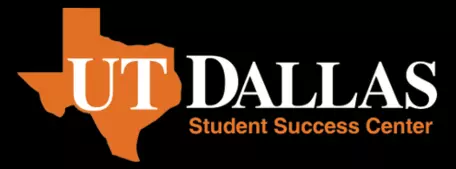Student Success Center
The mission of the Student Success Center (SSC) is to foster a learner-centered experience for undergraduate success by serving as a primary university resource for academic support, which complements the efforts of teaching faculty.
Office of Undergraduate Education, The University of Texas at Dallas
Established: 2008
https://www.utdallas.edu/studentsuccess/
Profile submitted by Julie Murphy and Ne'Shaun Jones
Vision and Goals
Provide academic support for any undergraduate student enrolled in a historically difficult course (which is defined by a DFW rate of over 25% for the preceding semester(s))
Center/Program Structure
Organizational Chart (Acrobat (PDF) 76kB Jul31 18)The Student Success Center is an independent entity within the Office of Undergraduate Education. The Student Success Center collaborates internally with STEM faculty. There are two directors, one assistant director, two program managers, four program specialists, four learning specialists, one administrative officer, two administrative assistants, and approximately 300 student workers.
(See uploaded organization chart).
Are there advantages of being structured this way?
The advantages to being structured this way with content experts employed for every unit allow the staff to connect with faulty on not just an administrative level, but on a content level. This allows our professional staff to train the peer leaders as well as help with any content questions while in the lab.
Are there particular challenges that result from this structure?
The biggest challenge of this structure is just education. We have to continually work to get in front of current and new faculty to explain our structure and how we can help supplement what they are teaching in the classroom.
Funding
The Student Success Center receives funds from the university through student fees to provide wages for the peer tutors. The Student Success center professional staff and office budget are provided through the Office of the Provost.
How has this funding structure influenced the undergraduate STEM education programming the center offers?
Allows us to offer support for most 1000 and 2000 level courses and some 3000 and 4000 level courses for Science and Math.
What are the specific advantages of having a center funded in this way?
Due to the wages coming out of student fees, the SSC is able to not only help undergraduate students with course work, but is also one of the biggest employers of students on campus. We are able to develop students as leaders and mentors for other peers that need academic assistance. While our services are free, students realize that they are investing in the SSC through their student fees and are more inclined to try out the labs and appointments.
What are the challenges?
The SSC has to reapply for student fee money each year. It is not guaranteed to be provided at its current rate. This would strongly impact our operations if it were not renewed.
Has this funding structure has changed over time?
The growth of the SSC has been in direct correlation to the increase in student fee monies it has received. The larger amount of student fees to be allocated as peer leader wages allows the SSC to provide more support to courses in the form of individual appointments, weekly reviews, exam reviews, etc.
Description of Programming
The Student Success Center has seven programs widely used by undergraduate students and some graduate students. These include, Peer Led Team Learning, Supplemental Instruction, Peer Tutoring – Science and Mathematics, The Writing Center, The CommLab, Academic Success Coaching, and Comet Cents.
Successes and Impacts
When it came to space, the Student Success Center moved from the Clark Center to the library and utilized both the lower level and third floor of the library. The Student Success Center started a variety of programs including Peer Tutoring (Fall 2012), support in Residential Halls (Fall 2013), Comet Cents (Fall 2014), CommLab (Fall 2015), Academic Success Coaching (Fall 2015), Summer Success Camps (Fall 2015), and CRLA mentor training (Fall 2016). The staffing size started at 9 in 2011 and has grown to 30 staff members during the 2016-2017 year. With all of our services, we started with approximately 31,000 visits in year 2011-2012 and had over 100,000 visits during 2016-2017.
Evaluation and Assessment
How does your center demonstrate its value, both in terms of assessing its own programming and responding to external evaluation?
The Student Success Center creates an Annual Report for the center and grade reports for Peer Led Team Learning, Supplemental Instruction, and Peer Tutoring. Peer Leaders are evaluated throughout each semester by supervisors.
All peer tutors are observed by area managers and peer team leaders throughout the semester as well and given feedback on how to improve their peer tutoring. Surveys are sent to all students using SSC services after each appointment and visit as well as at the end of the semester. Program managers use this information to inform courses that will be supported in the future as well as the model used in each area for peer tutoring.
Elements Contributing to Success
The Student Success Center is located in the library, which allows multiple students to see our services as they study. We also meet with faculty and department heads to form collaborative relationships to continue to support faculty and students as the university and the Student Success Center grows.



![[reuse info]](/images/information_16.png)